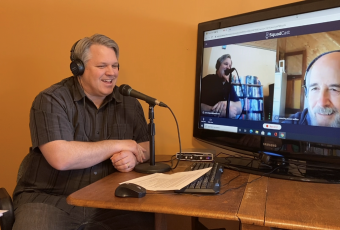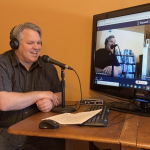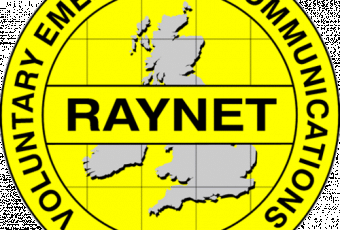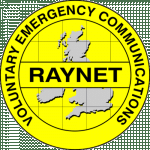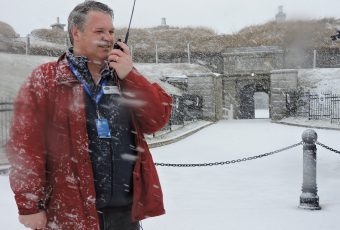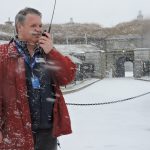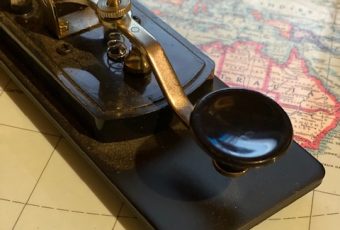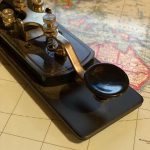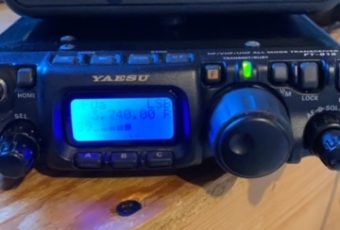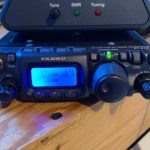Day: March 15, 2021
What was The Last Wireless Message On The Doomed Titanic?
Interview Transcript: Today in the last wire podcast, we’ll be discussing the radio systems found on the Titanic and how it shaped the future of emergency communications. Join me in […]
Learn about the South Wiltshire Raynet
Today in the Last Wire Podcast, we’re joined with Tom, (M7GMZ). Who’s part of the South Wiltshire Raynet in the United Kingdom. His group is part of a volunteer communication […]
Get On The Air” Contest is a Huge Success in Halifax!
On January 6th, 2021, Amateur radio operators waited until the noon gun fired before the “Get on the Air!” 2 Metre Simplex Challenge started. This 12-pound gun is a tribute […]
Do amateur radio operators still use Morse code?
In an emergency, Morse code can be generated by improvised methods such as turning a light on and off, tapping on an object or sounding a horn or whistle, making […]
When there is an emergency will you need to know about the hidden Yaesu menu?
Disasters in remote places have historically involved amateur radio operators. These “hams” have stepped in to provide assistance when other forms of communication fail. Disasters still happen regularly, and ham […]


Lessons Learned From A Derecho!
Jan 26, 2021 •
As a new Ham John, KE0ZOW found himself and his community in a severe weather event, know as a Derecho. The heavy wind event brought down power and communications a […]

Communication breaks down in High River
Jan 26, 2021 •
The town of High River is no stranger to flooding, but in 2013, there were communications break down in the region as water continued to flow. Vince had his orders […]

The Challenges Facing Ham Radio During A Search & Rescue Operation
Jan 26, 2021 •
As a working cowboy, he vanished from the Merritt area and his is abandoned horse was found fully saddled on a forest service road northwest of the city two days […]

What was The Last Wireless Message On The Doomed Titanic?
Feb 17, 2021 • 45:12
At 12:15 AM on April 15, 1912, a message rang out across the Atlantic: “CQD MGY 41.46 N 50.24 W.” The message, sent by a Marconi radio operator, came from […]

A Winter Storm Didn't Stop Texas Hams
Feb 25, 2021 • 12:28
The February 13–17, 2021 North American winter storm, also unofficially referred to as Winter Storm Uri, was a major winter and ice storm that had widespread impacts across the United […]

When disaster strikes in the UK, they call on Raynet.
Mar 3, 2021 • 21:09
Today in the Last Wire Podcast, we’re joined with Tom, (M7GMZ). Who’s part of the South Wiltshire Raynet in the United Kingdom. His group is part of a volunteer communication […]

A New Ham's Trial By Fire!
Apr 13, 2021 • 15:53
While Ed W4EMB, was still station in Iraq, he studied Ham radio while he could, between missions. Little did he know that when he got back and wrote his amateur […]

Why does this Emergency Amateur Radio group remain largely unknown?
Apr 21, 2021 • 19:30
The Military Auxiliary Radio System (MARS) is a Defense Department-sponsored civilian auxiliary of amateur radio operators that actively supports military operations. While the USA Defence Department will employ amateur radio […]

Wildfires Shut Down Communications
Jan 26, 2021 •
On this episode of The Last Wire Podcast, we are joined with Myles, VE7FSR. On this show, we will learn about the 2017 wildfires that displaced thousands of residents in […]
Categories
The Last Wire Podcast
- EMS Week 2023: A Time to Celebrate and Reflect on My Career as a ParamedicAs we wrap up EMS Week 2023, I want to share some of my reflections on my 28 years of
- From Dice Rolls to Disaster Response: The Unexpected Connection Between D&D and Emergency ManagementAs I sat in the theatre watching the new Dungeons & Dragons: Honor Among Thieves movie with my son, I
Got A Story To Share?
The Last Wire Podcast is your chance to share your experiences with the ham community.
Email your stories: john@lastwire.ca
